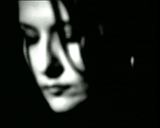
 Author of all texts
about mythology on
these web-pages is
Lidija Bajuk:
Author of all texts
about mythology on
these web-pages is
Lidija Bajuk:
|
lidija.bajuk@posluh.hr
scena.hgu.hr/lidija-bajuk/
- The Sky
- The Mountain
2. PERUNIKA
- Leluya
- Ball lightning
3. AQUARIUS
- Candlemen
WATER MAID
- Fairies
- Witches
4. DRAGON
- Water
SNAKE
- Bogorodica
(Rainbow)
5. GREEN GEORGE
- The Moon
- Corn Spirit
6. LEPA MARA
- Hair
- Embroidery
7. GRABANCIJAŠ
- Light
8. PESJANEK
- Forest
9. LITTLE RED HAT
(DWARF)
- The Cap, Little Hat
10. STRAHE & MRAKI
(GIANTS)
|
CORN SPIRIT
|
|
It was recorded in some parts of Bačka and Srijem that there were processions of young women in front of which young men would go waving flags of flowers, corn and ribbons and thus protecting all the present from ghosts. (These were pehaps the origins of flags made of cloth.) In the part of Croatia between Sinj and Imotski the tenth of the first harvest was separated and probably sacrificed to the giving god, called Dajbog/Dažbog. Its statue was usually placed near the fields. The tenth would be burned during harvest festival and its ashes would be covered by stones so the wind does not blow it away. In some parts one sheaf or at least a handful of corn would be thrown to the neighbouring field. Some Slavic tribes used to imagine the corn spirit as a man dressed in white with grass instead of hair. Land farming people believed he was the son of Mother Earth and Father Heaven. Sometimes people used to sacrifice horses before starting to harvest the fields. |